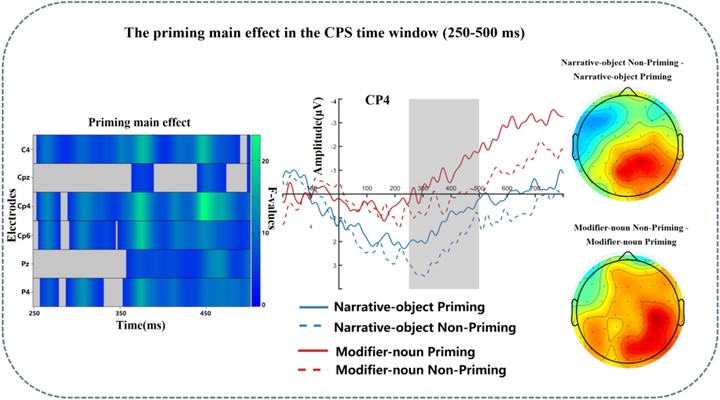ERP evidence for cross-domain prosodic priming from music to speech

Abstract
Considerable work has investigated similarities between the processing of music and language, but it remains unclear whether typical, genuine music can influence speech processing via cross-domain priming. To investigate this, we measured ERPs to musical phrases and to syntactically ambiguous Chinese phrases that could be disambiguated by early or late prosodic boundaries. Musical primes also had either early or late prosodic boundaries and we asked participants to judge whether the prime and target have the same structure. Within musical phrases, prosodic boundaries elicited reduced N1 and enhanced P2 components (relative to the no-boundary condition) and musical phrases with late boundaries exhibited a closure positive shift (CPS) component. More importantly, primed target phrases elicited a smaller CPS compared to non-primed phrases, regardless of the type of ambiguous phrase. These results suggest that prosodic priming can occur across domains, supporting the existence of common neural processes in music and language processing.